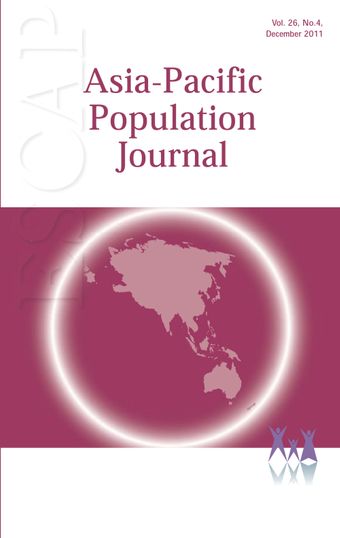-
Do slum dwellers have lower contraceptive prevalence rates? An analysis of current use patterns in Calcutta, India
- Source: Asia-Pacific Population Journal, Volume 26, Issue 4, Oct 2013, p. 29 - 56
-
- 23 Oct 2013
Abstract
This paper examines whether there are significant variations in contraceptive prevalence rates between women who live or do not live in slums of Calcutta, India. A Disparity Index is calculated, using unit level data from the 2006 Demographic Health Survey. The Index reveals that variations in overall and modern contraceptive prevalence rates between currently married slum and non-slum respondents are low. Statistical tests (both parametric and non-parametric) reveal that though differences in overall contraceptive prevalence rates are significantly lower in slums, differences in usage of modern methods between slum and non- slum areas is marginal. This is also confirmed by econometric methods using an ordered logit model. This model indicates that slum respondents are reluctant to adopt contraceptives. However, once their initial resistance is overcome, they prefer modern – particularly terminal – methods. Analysis reveals that cultural forces – socio-religious identity, language and preference for more children (particularly sons) – are responsible for creating barriers to adopting family planning methods.
© United Nations





